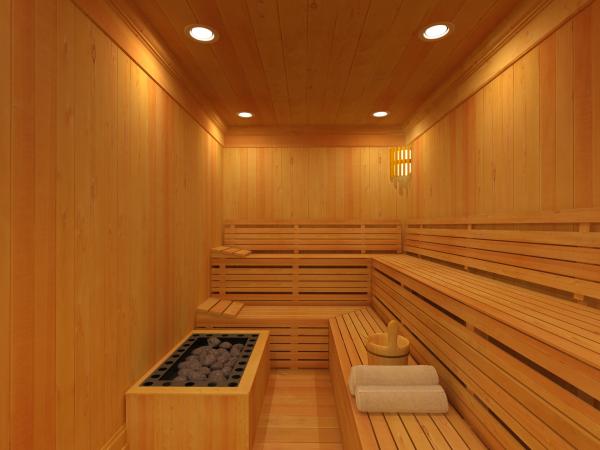Saunas, for the most part and for legions of adults, enjoy a warm reputation as being good for you. And a recent study, while not being totally conclusive, does tend to add more credence to the health benefits of sauna use.
The test area for this study was Finland, where this type of activity is ingrained in the culture (which, as far as these results are concerned, is both good and bad). That said, researchers studying the sauna habits of more than 1,600 adults between the ages of 53 and 74, and without a history of stroke, found that increased time in the hot, comforting wooden box greatly decreased the risk of experiencing this adverse event.
Specifically, they learned that those who sat for saunas four times or more per week were 60 percent less likely to experience a stroke over the following 15 years. That was compared to adults who had just one sauna per week. (A third frequency group took 2-3 saunas per week.) These findings are in line with previous studies showing that sauna use provides cardiovascular benefits.
Among the 1,628 men and women in this study – nearly evenly split by gender, 840 females (51.6%) and 788 males (48.4%) – 155 suffered a stroke during the next decade and a half. Of those, 95 were male and 60 female. For those who had four-to-seven sauna sessions per week, the stroke rate was 3 per 1,000 adults per year. Meanwhile, for those who had just one weekly sauna, the rate of stroke was much higher: 8 per 1,000.
When researchers controlled for other influencers, the results were basically unchanged.
 "After further adjustment for several established risk factors and other potential confounders (BMI, smoking, SBP [systolic blood pressure], LDL-C, alcohol consumption, type 2 diabetes, and use of hypertensive medication, aspirin, and lipid-lowering therapy)," they wrote in their paper, "the HR [hazard ratio] remained the same for 4–7 sauna bathing sessions per week."
"After further adjustment for several established risk factors and other potential confounders (BMI, smoking, SBP [systolic blood pressure], LDL-C, alcohol consumption, type 2 diabetes, and use of hypertensive medication, aspirin, and lipid-lowering therapy)," they wrote in their paper, "the HR [hazard ratio] remained the same for 4–7 sauna bathing sessions per week."
The study, "Sauna bathing reduces the risk of stroke in Finnish men and women, A prospective cohort study," was published recently in the journal Neurology.
"Overall, the results of this study demonstrate that frequent sauna bathing is associated with a reduced risk of future stroke in middle-aged to elderly Caucasian men and women," the researchers concluded. "The present study adds to emerging evidence that passive heat therapy such as sauna bathing could improve cardiovascular health and decrease the risk of vascular events."
OK, that's all well and good, However, you've been waiting for the "but" ... and here it is.
Since saunas are a way of life for Fins and they've been exposed to them as children and throughout their lives, it's certainly possible that their bodies have become conditioned to them. As a result, it's conceivable that the protective cardiovascular effects of saunas may not translate to other populations. Another limitation of the study was that it was observational, as opposed to one where some adults were assigned to take saunas, while others in a control group were instructed not to.
That aside, the researchers also point out that these results may not hold up when it comes to other body-warming activities, like jacuzzis and the like. They write that "the current findings are based on typical Finnish sauna baths and cannot be applied to other forms of passive heat therapy such as infrared heat exposure, steam rooms, Waon therapy." In addition, "hot tubs that are used in other settings, as these may operate at lower temperatures and do not mimic the traditional Finnish sauna conditions."
Finally, a word of caution. While saunas may be healthy for adults in general, that doesn't mean everyone – for instance, older adults, who may not be used to the intense heat exposure – should just take up the activity. Checking with a physician first is always advisable.




